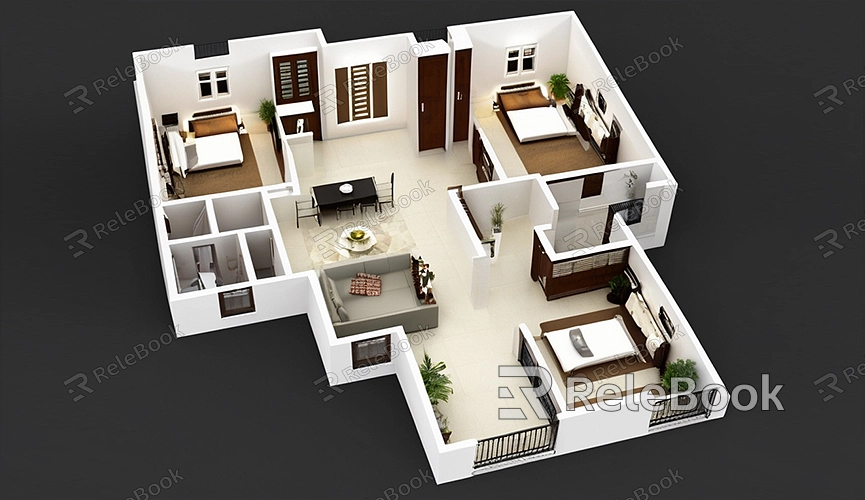How to Make Reference Images for 3D Modeling
Reference images are crucial tools in 3D modeling, helping you accurately build your models and ensure precision in detail and proportion. Whether you're creating characters, buildings, or other complex objects, high-quality reference images provide clear guidance throughout the modeling process. This guide will walk you through how to create effective reference images to enhance your 3D modeling efficiency and accuracy.
Preparation for Creating Reference Images
Before you start making reference images, there are several basic steps you need to complete:

1. Define Your Modeling Goals:
- Before creating reference images, clarify the type and style of the 3D model you intend to create. This will determine what information you need to gather and help you select appropriate reference images.
2. Gather Reference Material:
- Find relevant real-life photos, illustrations, or design blueprints to use as reference material. You can obtain these from the internet, books, or professional design websites.
Steps to Create Reference Images
1. Select Suitable Reference Images:
- Choose clear, high-resolution images to ensure the effectiveness of your references. For character models, include front, side, and back views to cover all angles.
- For buildings or objects, select images from different angles to cover all key parts of the object.
2. Use Image Editing Software:
- Utilize image editing software (such as Photoshop or GIMP) to process your reference images. Crop, adjust contrast, and brightness to highlight key details in the images.
- Create separate layers for each view (front, side, top) and arrange them together so they can be easily used in your 3D modeling software.
3. Create a Scale Reference:
- To ensure accurate proportions in your model, add a scale reference to your images. Use objects of known size (such as rulers or objects with known dimensions) as a scale to make precise size adjustments during modeling.
4. Produce Multiple View Images:
- For complex models, it's advisable to create reference images from multiple angles. For example, character models typically require front, side, and back views, while building models might need front, side, and top views.
- Ensure these view images are proportionally consistent for easy comparison in your 3D modeling software.
Importing Reference Images into 3D Modeling Software
In Blender, Maya, or other 3D modeling software, you can import and set reference images as background images for easier alignment during modeling:
1. Import Reference Images:
- Use the background image import feature in your 3D modeling software. Import your reference images into the corresponding views (such as front view, side view, etc.).
2. Adjust Image Position and Size:
- Adjust the position and size of the reference images to match the actual dimensions of your model. Use alignment tools in the software to ensure accurate placement of the images.
3. Lock Image Layers:
- To prevent accidental modifications during modeling, lock the reference image layers, keeping them fixed in the viewport.
Tips for Using Reference Images
Here are some tips to help you use reference images more effectively during your modeling process:
1. Maintain Image Consistency:
- Ensure all reference images have a consistent style and scale to maintain uniformity during modeling. Avoid using low-quality or inconsistent angle images, as they can lead to inaccuracies in your model.
2. Regularly Cross-Check:
- Regularly compare your model with the reference images to check details and proportions. This helps you catch and correct any inconsistencies promptly.
3. Incorporate Additional Reference Materials:
- Besides static images, using video or animation reference materials can be beneficial. Dynamic references can help you understand the movement and behavior of objects, which is especially useful for complex models.
Creating high-quality reference images is a key step to successful 3D modeling. By selecting appropriate images, using image editing software to refine details, producing multi-angle views, and importing them into your 3D modeling software, you can significantly improve the accuracy and efficiency of your modeling process. Additionally, if you need high-quality 3D textures and HDRIs for creating models and virtual scenes, you can download them for free from [Relebook’s texture site](https://textures.relebook.com/). For beautiful 3D models, visit [Relebook’s model site](https://3dmodels.relebook.com/), where Relebook offers a wide range of premium 3D resources. These resources will help you achieve your modeling goals and create outstanding 3D.

